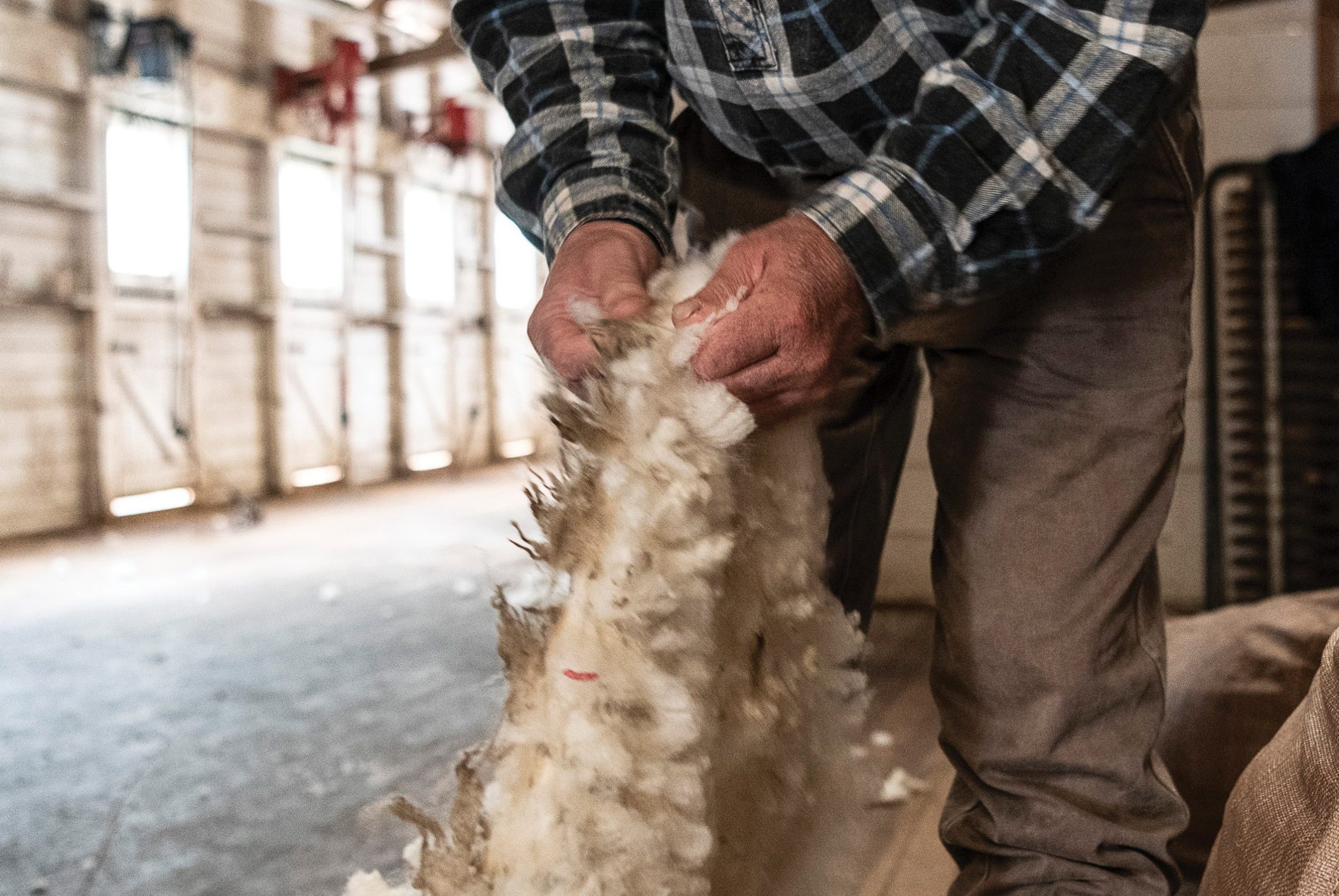Drop in quality threatens comeback
By Richard Gavigan

This season’s improvement in the prices and prospects for New Zealand strong wool is good news for the industry.
But a drop-off in clip preparation standards and subsequent wool quality threatens to derail our crossbred wool’s comeback.
Shearing contractors throughout the country have come under pressure from farmers to reduce the number of woolshed staff to keep a lid on the cost of shearing.
Employing one woolhandler per shearer was once standard practice, but many sheds shearing crossbred sheep (ewes producing wool about 37 microns in fibre diameter) are now trying to get by with half that number of woolhandling staff.
While this may be understandable given the cost of wool harvesting relative to returns, in many cases it can be a false economy. It may also have a negative effect on NZ wool’s competitive advantage in the international marketplace.
According to a Manawatu-based shearing contractor, 70-80% of his clients have dropped a woolhandler from a four-stand woolshed over the last two years. This means sheds harvesting second-shear wool are now often working with only two woolhandlers, while full-wool sheds using a wool table are now operating with three at best. Removing one woolhandler from a woolshed saves a farmer about 20 cents/ sheep.
The contractor says he recognises the financial challenges facing clients, but is concerned his teams can’t do a proper job and that farmers are actually losing themselves money.
“Our farmers still want four shearers to do 1000 sheep a day,” he says. “But at that rate, with only two woolhandlers it’s pretty much impossible to do anything like a decent job with the wool.”
Unfortunately, the shearing contractor is right. Time and motion observations made by NZ Wool Board staff in the 1980s suggested in a closed-board woolshed, about 50% of a full woolhandling team’s time was spent simply moving wool rather than optimising its readiness for processing and subsequent attractiveness to buyers. Looking at the effect of reducing shed staff, the calculations are simple:
- four shearers, 1000 sheep shorn per day
- four woolhandlers x 8 hours worked = 32 total woolhandler hours
- two woolhandlers x 8 hours = 16 total woolhandler hours
- Daily wool volume does not change: hours available to optimise wool quality = 0
In better-designed, more efficient open-board (including raised-board) woolsheds less time is spent simply moving wool so more time is available for clip preparation. In these sheds, wool quality is less sensitive to changes in staff ratios, but can still be impacted if woolhandler numbers are reduced without first considering the characteristics of the wool coming off the sheep.
Clear discounts for faults
What impact can the quality of clip preparation have on wool price and how does this relate to potential cost savings made by reducing woolhandling staff?
Segard Masurel lower North Island wool representative Andy Price says there are clear price discounts for faults present in what would otherwise be good quality wool clips.
Given that even second-shorn ewes will likely clip at least 1.8kg of clean fleece wool at a shearing, the potential discount for sub-standard clip preparation typically ranges from 35-90c/sheep, depending on how poor the job is. This is significantly more than the cost saving per woolhandler of 20c/sheep, so any move to reduce woolshed staff should be made with care.
Those that have already taken the clippers to their woolhandling workforce should probably review that decision along with the quality of their last wool clip.
PGG Wrightson general manager wool Grant Edwards agrees that there has been a reduction in the quality of NZ’s crossbred clip.
“Some growers are still fully focused on clip preparation but, in general terms, there has been a drop-off in wool quality,” he says. “We are seeing it in both the North and South Islands, and it restricts the ability of certain wools to be used in certain end-products.
“Removing woolhandlers from the woolshed can backfire. It’s important that you look at what your starting point is in terms of wool quality and work out what you need to do to make sure that you don’t miss out on price premiums.
“Quality has always been a key point of difference for NZ wool across the world and we need to maintain that,” Edwards says. “There are two parts to it – we need to present a quality product on the sheep’s back, then we need to make sure that our preparation standards – influenced by the number of staff and the training that they receive – are up to the mark.”
• Richard Gavigan is a farmer, wool technology teacher and former NZ Wool Board employee.
Reasons for discount
- Inconsistent preparation (discoloured wool, short wool and/or wool containing vegetable matter present) = 30c/kg clean discount.
- Poor preparation (large amounts of fault present) = 50c/kg clean discount.
- Colour = 20-30c/kg clean when Y-Z (yellowness) is over 3.5.
- Vegetable matter (VM) = 25c/kg clean discount when VM is above 0.2% in good coloured wools (Y-Z less than 2.0); 35c/kg clean discount when VM is 0.4% or greater.
- Penstain = 40c/kg clean when moderate to heavy.
- Cotting = 40c/kg clean when present, even in very poor coloured wool.
- Sheep markers = over 100c/kg clean discount when present in significant amounts.




